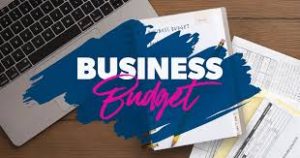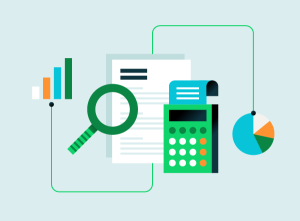
You have a unique opportunity to be your boss, realize your entrepreneurial vision, and control your financial future when you own and operate your firm.
But you’ll want to take every safety measure possible behind the scenes to prevent becoming one of the 20% of small firms that fail within their first year.
Any new business owner would do well to start by making a budget for their enterprise. You may make a better plan for the future of your flourishing firm by taking a deeper look at your assets, spending, and financial objectives. And preferably, you can profit financially in some way.
Let’s examine a business budget in more detail and talk about the advantages of budgeting. A business budget template can also be found there, which we hope you can use going ahead. Use budgeting for your business to your benefit if you have the correct procedures and tools.
What is a business budget?
An organization’s revenue, expenses, and profit for a specific period—typically monthly, quarterly, or annually—are outlined in a company budget.
Every dollar your company makes has a purpose according to a solid business budget. For instance, some funds might be used for business expansion or expenses.
Others will assist pay for your and your staff’s daily operating costs and take-home income. A road map for spending and earning will be provided by sound corporate budget planning. It will provide insight into your company’s financial future and enable more intelligent decisions.
Are you prepared to launch your company idea? You must take initial expenditures into account. Are you unsure if you should or can buy new equipment this year? Consult your company’s budget plan.
Perhaps you’re trying to find ways to save money. Your business budget can give you a snapshot of your financial situation, showing you where you’re spending money and where you could stand to make savings. You can foster higher business performance and increase earnings from the previous quarter or year if you have a superior vision.
What’s included in a business budget?
A company’s overall revenue and expenses are included in the budget to determine net profit (or loss). According to the FDIC, the most acceptable corporate budgets include the “nuts and bolts” of regular income and expenses, such as:
- Average value per order
- Orders for products made each month
- Billable time
- Typical payroll expenses
- Materials costs
- Utilities, a mortgage, and rent
Business owners should remember that output depends on input while creating a budget for their company. When managing your company’s finances, gather precise data points. A simple math mistake or typo might cause misunderstanding or, worse yet, lead to unwise financial decisions.
Budgeting best practices for business

A firm business budget establishes a direct link between your ongoing operations and available funds. You can use it to manage complicated business decisions and pinpoint potential development prospects. But creating an efficient budget takes time.
Keep in mind these small business budget best practices when you draft and review your business budget:
- Consider how any adjustment to your expenses or income will affect your budget. Employing a new worker might result in adjustments to payroll taxes, benefits, and other costs in addition to wage increases. Always think about the effects before making changes to your company’s budget.
- Make sure you account for all types of spending in your budget, including fixed, variable, and unexpected costs. By anticipating these charges, you may better manage your business budget and prepare for the future. Using QuickBooks, you can quickly and precisely track your business spending.
- See your company’s budget as a living, evolving document. The unanticipated occurs, and financial conditions alter. It would be best if you always had a plan for your company’s survival. Regularly review your financial statements, reevaluate your expenses, and make any required adjustments to your business budget.
- Set objectives but refrain from wishful thinking. Use your bookkeeping records to predict what might happen over the upcoming month, quarter, or year. But in the end, it’s wiser to stick to a tight budget than to plan for the best-case situation.
- Keep an eye out for opportunities to progress while saving money. Your business owner is responsible for setting up your company for success. Identify your financial solid points and potential for growth. Identifying possibilities to strengthen your company’s finances will help your business become more successful and long-lasting.
Business Budgets Explained
A business budget depicts your financial environment and outlines the course you wish to take. The first step in creating a budget is to record the present financial state of your company. List all of the revenue, costs, and profits. Next, project future scenarios using the budget to include expected income and expenses.
Use the budget to set objectives and better understand the amount of money you’ll need to bring in to pay anticipated expenses. Track actual spending and revenue against projections as you make progress.
Business budgets typically encompass a year’s worth of accounting. The budget can also be divided into semiannual, quarterly, and monthly components. The fiscal year, or the time utilized for financial and tax reporting, is when most budgets are created.
What are the three types of budgets?
The various types have a surplus or a deficit or are balanced despite being more frequently used to describe government budgets than businesses. The terminology used in government typically refers to whether tax collection is sufficient to pay for expenses.
- Surplus: When revenue outpaces costs, the business makes a profit.
- In a deficit, expenses outweigh income. The company experiences a temporary loss in revenue. Occasionally, a budget is acceptable to have a shortage after a term. For instance, let’s say you want to spend money on new equipment to raise output and revenue potential. Even if the expense of that equipment might be greater than your earnings during that time frame, increasing production should eventually lead to more significant earnings and profits.
- Balanced: Income and expenses are equal. The company makes a profit.
Your budget outlines the direction your funds ought to take. Monitoring your actual income and expenses about your budget is also crucial. A certain amount of variation is expected, but if real income or expenditure continually falls short of or exceeds the budget, it may be a sign that your company is having unanticipated financial problems.
You can learn about the company environment by looking at actual income and expense variations. For instance, you might discover that your revenue rises more than anticipated in the months leading up to Christmas or drops more than expected in August.
You can use this information to manage cash flow and schedule supplies to assist your company weather upcoming seasonal swings.
How Business Budgets Work

Budgets for businesses consider the amount of cash you have and the amount you’ll need. You can use a budget to forecast whether you will have more money coming in than going out.
Your financial projections should reflect reality. Additionally, you might choose to overestimate your financial performance or make distinct budgets for your conservative, moderate, and aggressive spending.
Budgeting can be challenging, especially if you’re starting and lack access to past data. In that situation, try to make financial projections based on sales data and details you may gather from similar businesses. Software for financial planning can be helpful here.
It would help if you compared your forecasts with actuals each month. This can aid decision-making, and creating forecasting scenarios with associated budgets can be beneficial. For instance, if you’re considering hiring more personnel, you can compare the cost of hiring a permanent employee to hiring temporary workers or having current employees work overtime.
Suppose you’re considering buying extra equipment to boost production. In that case, you can experiment with various income projections to determine how much output would need to rise to make the investment financially viable.
Every month, you should compare your predictions to the actuals. Making forecasting scenarios and accompanying budgets can help decision-making and be helpful.
Considering expanding your workforce, you might weigh the costs of recruiting a permanent employee against hiring temporary help or having current staff work extra hours. Suppose you’re thinking about investing in more equipment to increase production. In that case, you can experiment with different income estimates to see how much more output is required to make the investment profitable.
You can utilize your budget to create goals for your company’s sales and operating profit. Your budget can assist you in identifying issues like high costs or a weak cash flow.
A well-planned budget can assist your company in obtaining money from investors or qualifying for a bank loan with a fair interest rate.
Critical Steps to Creating a Business Budget
Here is an example of creating a static budget using a template you can download in the section below.
- In the budget column, include your sources of income together with the projected revenue for each. As the financial term goes on, you’ll add actuals next to it.
- List your variable expenses along with an estimate under operational expenses. Make projections using previous data and predicted income. Consider the cost of raw materials, the labor to create the goods, and the cost to sell and distribute them, for instance, if you intend to sell 50 pieces per month.
- Include your fixed expenses under operating expenses and a projected amount in the budget column.
- Don’t forget to factor in projections for increases, new workers, and additional expenses like debt interest payments. Include cost estimates for one-time expenses like new office equipment. These will be included in your budget’s non-operating expenses section.
Although these actions can be carried out manually, most businesses employ software to perform these tasks. Training and certificate programs are included for you and your finance team to fully utilize sophisticated financial planning software’s capabilities.
Conclusion
A budget serves as your company’s road plan. It enables you to manage your business efficiently, identify functional areas that require development, and forecast cash flow. Realistic budgets are something that successful organizations spend a lot of time and energy developing since they’re an effective tool to gauge how far the company has come in reaching its objectives.
For new businesses, creating a budget can be a bit overwhelming because there are no preliminary numbers to inform their budget estimates. However, with some calculations based on competitors’ performance and knowledge of the budget’s components, you can finish your first budget and have a good road map for future budgets.

